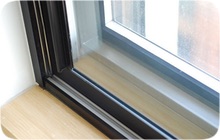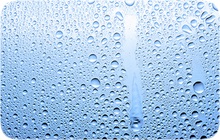
More Articles

Living in close proximity to a major airport can be distressing due to the noise of aircraft continually taking off and landing. For this reason, many of these airports offer to retrofit residences in the vicinity with sound-proofing. Sometimes unforeseen problems can be created by such actions.
An apartment on the ground floor of an apartment building had some problems with moisture coming up through the slab. This particular apartment appeared to be at the lowest point on the block, so would be most likely to be affected by a rise in the water table. The neighborhood the building was part of is in the flight path of Los Angeles International Airport. The airport was in the process of retrofitting residences in this area for soundproofing. Apparently, there had been some minor mold problems in the apartment prior to the retrofit, but once the soundproofing was done the mold growth magnified.

When I arrived on the site, there were strong moldy odors in the apartment. The tenant with her 11-year-old daughter had moved out due to allergies and other respiratory symptoms. I could actually feel the moisture on portions of the carpet by examining it with my hands. Visible mold growth was seen on shoes, handbags and some clothing in the closets. Visible dark mold growth was observed on the walls of the living room and the daughter’s bedroom. This is an old building with plaster or button-board walls rather than drywall with fiberglass insulation inside. Such walls are less prone to mold growth inside compared with drywall, but with excessive moisture inside the building, they are subject to surface mold growth due to condensation. The surface of these less insulated walls tends to be colder in winter weather than drywall with fiberglass insulation inside. Cold walls with excessive moisture or high humidity inside a room will produce condensation on the walls and will result in surface mold growth under certain conditions.

My theory of what occurred, in this case, was that there was an existing problem with moisture coming up through the slab. Soundproofing included caulking, weather stripping, and duel pane windows. There may have been other actions as well. In this apartment, the soundproofing workers had installed two vents measuring about three inches in diameter. An exhaust fan was programmed to turn on for five minutes every hour. This did provide a small amount of outside air but was woefully inadequate. There was thus considerably less ventilation following the soundproofing. This lack of ventilation reduced the amount of moisture that could be dissipated resulting in more moisture being retained in the carpeting and more condensation on the walls. The end result was a carpet heavily contaminated with fungal and bacterial growth as well as heavy mold growth on walls particularly in bedroom locations.
It was never established that moisture indeed was infiltrating through the slab. In fact, building moisture experts eventually determined that this was not the case, but it was true that inadequate outside air to dilute and purge moisture-laden air inside the apartment was primarily responsible for the massive mold growth inside. While I do suspect that some moisture was indeed coming up through the slab, there are other explanations. With one adult and a near teen staying in the small apartment, respiration (breathing) along with cooking and bathing with little to no facility for exhausting the moisture, sufficient condensation can be produced to result in mold growth.
Appropriate actions were recommended and eventually accomplished to substantially increase the volume of outside air brought into this apartment. Moldy material was removed and no continuing mold problems were reported.






